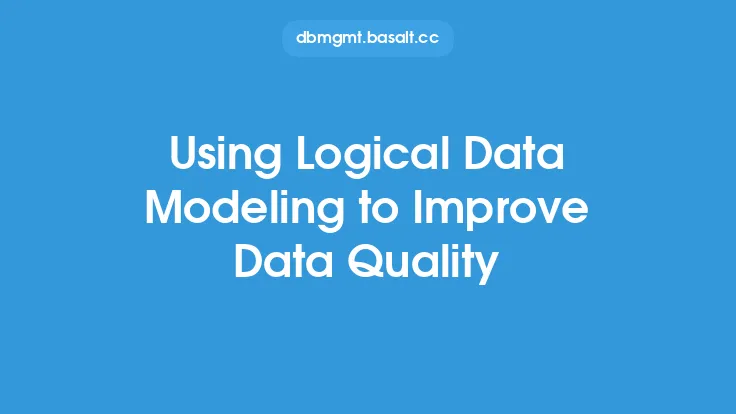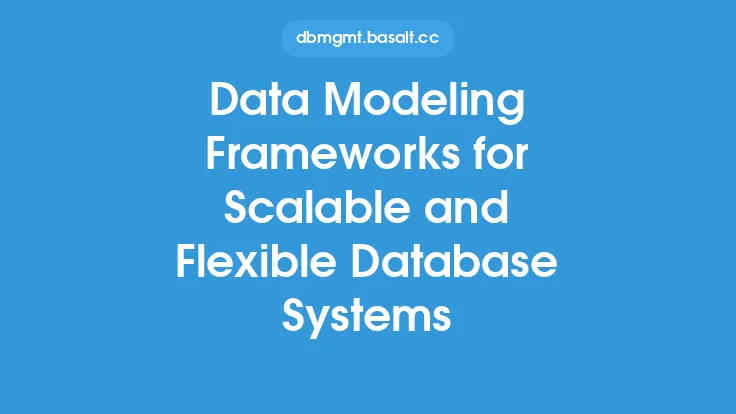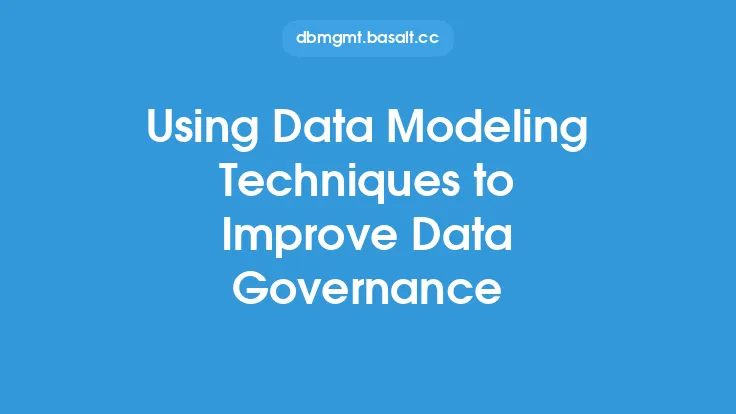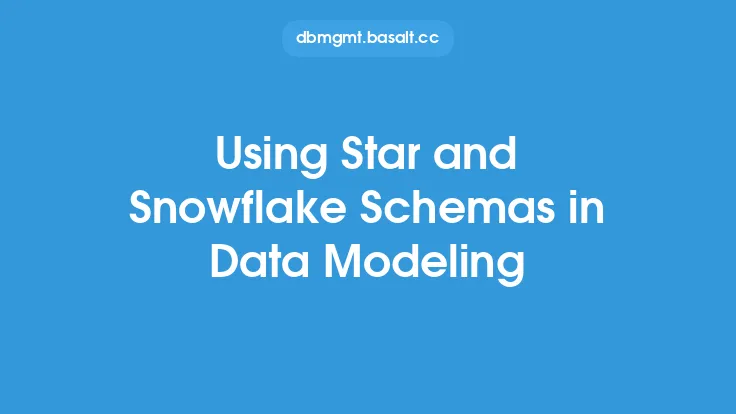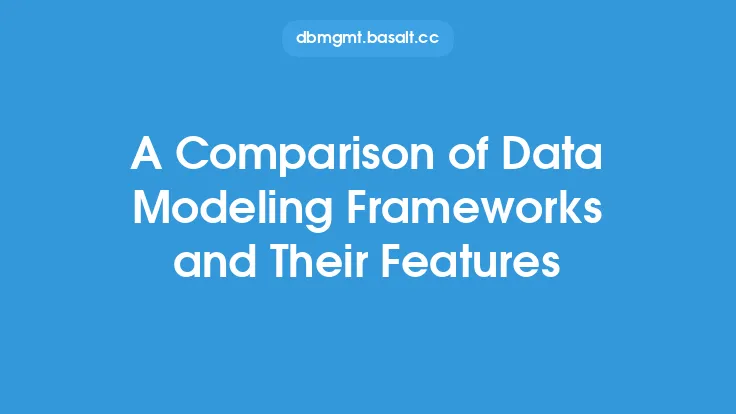Data consistency and integrity are crucial aspects of any database system, as they ensure that the data stored is accurate, reliable, and trustworthy. One effective way to achieve data consistency and integrity is by using data modeling frameworks. These frameworks provide a structured approach to designing and implementing databases, allowing developers to create robust and scalable data models that meet the needs of their applications.
What are Data Modeling Frameworks?
Data modeling frameworks are software tools that provide a set of rules, guidelines, and best practices for designing and implementing databases. They help developers to create a conceptual representation of the data, which can then be used to generate a physical database schema. Data modeling frameworks typically include features such as data type definitions, relationship modeling, and data validation rules, which help to ensure data consistency and integrity.
Benefits of Using Data Modeling Frameworks
Using data modeling frameworks can bring numerous benefits to database development, including improved data consistency and integrity. Some of the key benefits include:
- Improved data quality: Data modeling frameworks help to ensure that data is accurate, complete, and consistent, which is critical for making informed business decisions.
- Reduced data redundancy: By using a data modeling framework, developers can identify and eliminate data redundancy, which can help to reduce storage costs and improve data retrieval performance.
- Improved data scalability: Data modeling frameworks can help developers to design databases that are scalable and flexible, making it easier to adapt to changing business needs.
- Enhanced data security: Data modeling frameworks can include features such as data encryption and access control, which help to protect sensitive data from unauthorized access.
Key Components of Data Modeling Frameworks
Data modeling frameworks typically include several key components, including:
- Entity-relationship modeling: This component allows developers to define the relationships between different data entities, such as customers, orders, and products.
- Data type definitions: This component provides a set of predefined data types, such as integers, strings, and dates, which can be used to define the structure of the data.
- Data validation rules: This component allows developers to define rules for validating data, such as checking for invalid or missing values.
- Data transformation rules: This component provides a set of rules for transforming data from one format to another, such as converting data from a legacy system to a new format.
How Data Modeling Frameworks Improve Data Consistency and Integrity
Data modeling frameworks improve data consistency and integrity in several ways, including:
- By providing a standardized approach to data modeling, which helps to ensure that data is defined and structured consistently across the database.
- By including data validation rules, which help to ensure that data is accurate and complete.
- By providing a set of predefined data types, which helps to ensure that data is stored in a consistent format.
- By allowing developers to define relationships between data entities, which helps to ensure that data is consistent and accurate.
Best Practices for Using Data Modeling Frameworks
To get the most out of data modeling frameworks, developers should follow several best practices, including:
- Define a clear data strategy: Before using a data modeling framework, developers should define a clear data strategy that outlines the goals and objectives of the database.
- Use a standardized approach: Developers should use a standardized approach to data modeling, which helps to ensure that data is defined and structured consistently across the database.
- Validate data: Developers should use data validation rules to ensure that data is accurate and complete.
- Test thoroughly: Developers should test the database thoroughly to ensure that it meets the requirements of the application.
Common Challenges and Limitations
While data modeling frameworks can bring numerous benefits to database development, there are also several common challenges and limitations to be aware of, including:
- Complexity: Data modeling frameworks can be complex and difficult to use, especially for developers who are new to data modeling.
- Cost: Some data modeling frameworks can be expensive, especially for large-scale databases.
- Limited flexibility: Some data modeling frameworks can be inflexible, making it difficult to adapt to changing business needs.
- Integration issues: Data modeling frameworks can sometimes have integration issues with other tools and systems, which can make it difficult to implement and use.
Future Directions
The use of data modeling frameworks is likely to continue to evolve in the future, with several trends and directions emerging, including:
- Increased use of cloud-based data modeling frameworks: Cloud-based data modeling frameworks are becoming increasingly popular, as they provide a scalable and flexible way to design and implement databases.
- Greater emphasis on data governance: Data governance is becoming increasingly important, as organizations seek to ensure that their data is accurate, complete, and secure.
- Increased use of artificial intelligence and machine learning: Artificial intelligence and machine learning are being used increasingly in data modeling frameworks, to help improve data quality and reduce errors.
- Greater emphasis on data security: Data security is becoming increasingly important, as organizations seek to protect their sensitive data from unauthorized access.
